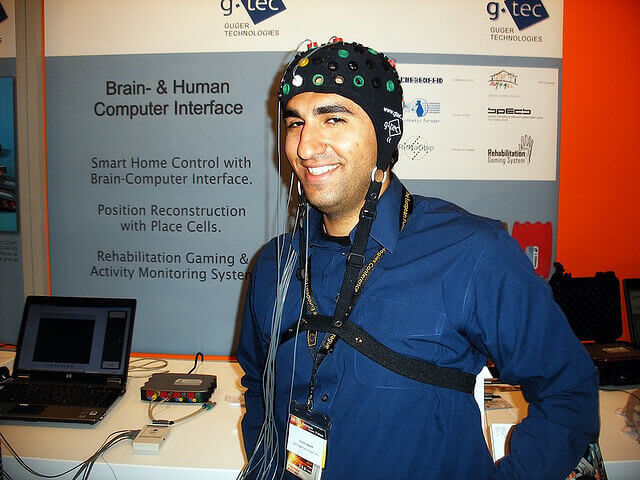Haptic Humans: The Infinite Pleasure Possibilities of the Remote Sex Avatar
James Cameron took the word “avatar” out of the realm of 2D thumbnails…
… but it will be the next generation of haptics scientists that take it from the big screen fantasy films and into reality.
Haptic technology is a combination of several developing modern sciences which requires not only an extensive understanding of the human mind-body mapping neurology, but also the intricate development of technological systems which allow humans to control mechanized devices through the sense of touch. The avatar has become such a popular concept, even the pentagon wants in. This technology has a number of applications for advancement in various fields, and a quick glance at current projects suggests that with the right confluence of successful development and cultural acceptance, it could completely transform that way human beings interact on just about every level. Sex, of course, is at the top of that list.
Your Brain on Tech
In interdisciplinary labs all over the world, from Israel to Korea and just about every technologically equipped nation in between, devoted mind are working tirelessly to crack the code of the mind-controlled computer. Direct access to the neural network allows even further advancements in the simulation of stimulation, allowing for true remote connections and the creation of sensation quite literally from thin air. The technology of BEAMING (Being in Augmented Multi-modal Naturally-networked Gatherings), pioneered by Israel’s Advanced Virtuality Lab (AVL) at the Interdisciplinary Center (IDC) in Herzliya, is one project in a sea of new technologies designed to improve our personal interactive experiences.
Researchers Jin Kim and Yung Choi at the Media Institute and Design (MIND) Lab at Michigan State University have taken the lead on another aspect of haptic technology, attempting to determine the quality of sensory input needed for the body to adequately substitute information from one sense to another. This sensory substitution [pdf] of visual input from virtual worlds, combined with vibrotactile biofeedback designed for Brain-Computer Interface (BCI) devices opens up a whole new world where the virtual spills out into the real.
 Image Source: Arenamontanus via Flickr
Image Source: Arenamontanus via Flickr
Synesthesia and Sensory Substitutes
The primary quality of these new developments is synesthesia. Dr. Hugo Heyrman, Antwerp’s famed new-media researcher, predicted the importance of synesthesia to the development of future technologies when much of this research first began to appear feasible, in 2007:
A human is his world. I am my world. We are our world. Memory is neither a single entity nor a phenomenon that occurs in a single area of the brain. A single moment of understanding can flood a whole life with meaning. Memory is an interactive storage bank of virtual possessions. The more sensory experience you incorporate into your memories, the more likely you are to remember them. Our memory is feeding our future. Today, a synesthesia culture is taking form. Synesthesia is the future.
New telepresence technology won’t just allow you to cross the language barrier, but can completely reinvent how we view our own bodies. Your telepresence avatar can not only translate body language like hand gestures and facial expressions, but combined with the synesthetic properties of haptic technology, could physically manipulate your appearance and allow you to feel sensations from an entirely different body.
The Future of Virtual Sex
From simple enhancements of your own appendages to the creation of a completely new bodily form, haptics holds the key to a revolutionary way of interacting through virtual worlds, but in reality. It isn’t just gender that becomes completely fluid in a haptic environment. Users would not only have the opportunity to change or augment sex organs, but to appear like any one (or any thing) by adding in extra features which the user would by physically capable of feeling and manipulating – a new face, an extra set of arms, hair down to the floor, even a whole set of tentacles… without the need for permanent surgical augmentation. How would you change your body for a haptic virtual sexual encounter, if your only limit was your own imagination?
We want to know what you think!
How will this technological revolution change the way we think about the boundaries of sexual orientation and gender?
Leave a reply
You must be logged in to post a comment.

















